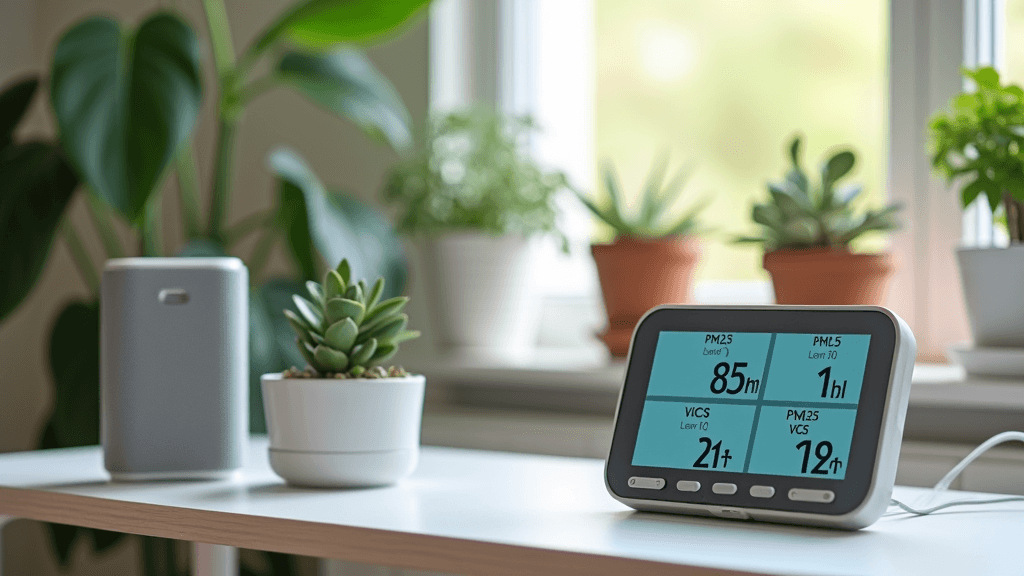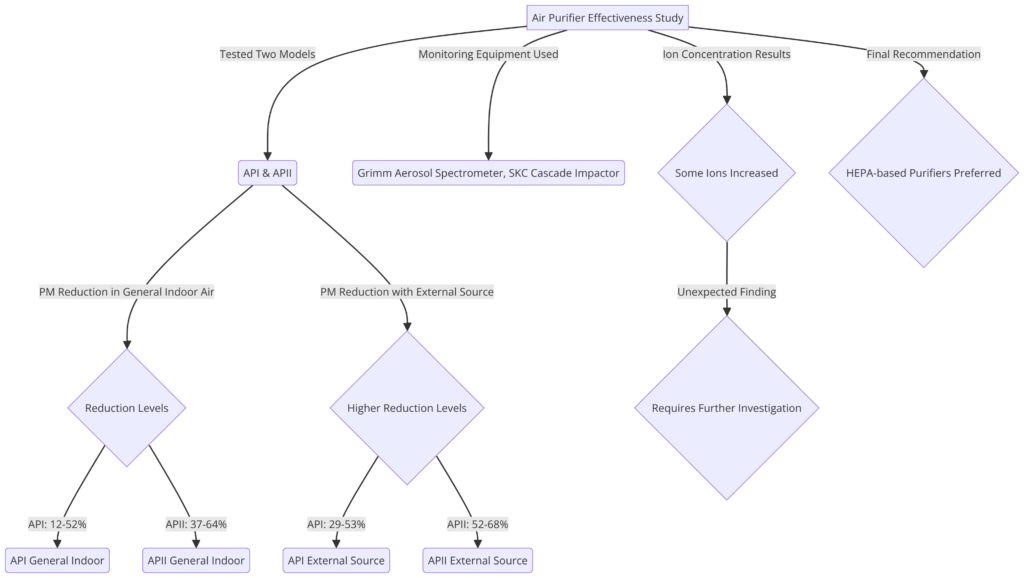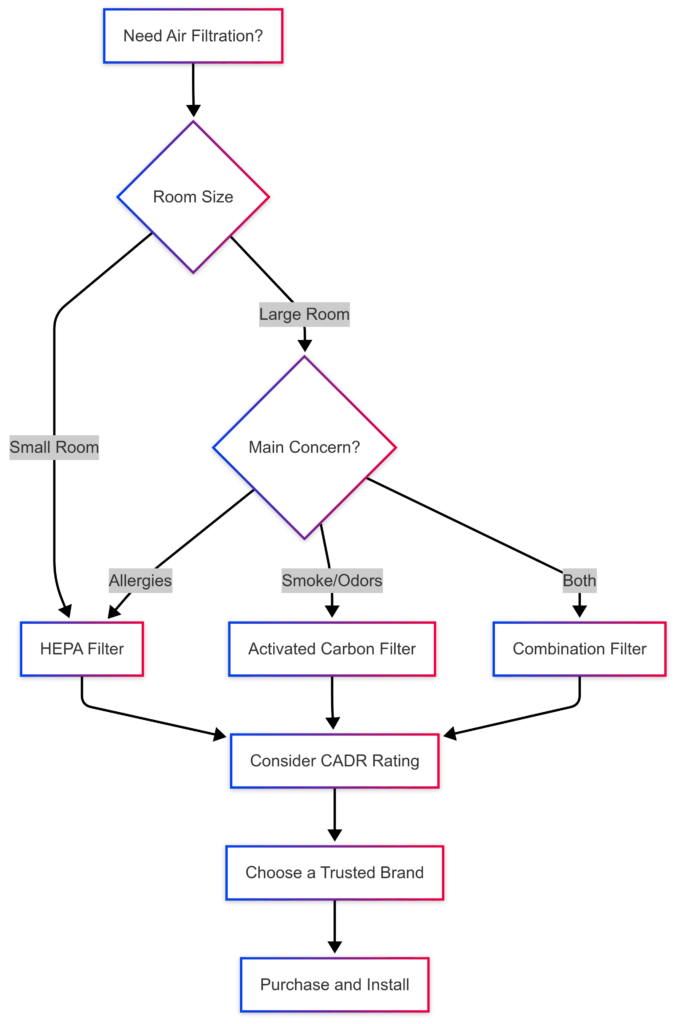If you’ve ever checked two different air quality apps at the exact location, you’ll probably notice the numbers aren’t always the same. This can be a little confusing, and sometimes it leaves you wondering which model to trust or how these models generate their data. Comparing air quality data between models actually reveals a lot about air pollution, data science, and even about what’s floating around in the air inside our homes. This quick guide is here to show you how to make sense of these numbers and track down new ways to get better air, with a tip you might not expect: why getting into the numbers could nudge you toward FastFilters.com for your air purification game.

Why Compare Air Quality Data in the First Place?
Air quality numbers aren’t just for scientists or people with allergies; they’re actually pretty handy for anyone who cares about living in healthy spaces. Comparing data from different models isn’t about nitpicking, it’s about tracking down patterns and figuring out if your readings really reflect your environment. Indoor and outdoor air quality models draw information from distinct sources, employ their own formulas, and each presents its unique perspective on cleaner air.
In some homes, people compare the readings from two air purifiers or sensors and notice they’re miles apart. This usually sparks a debate: Should you ignore the high readings, or act on the warnings? Spotting these differences early helps you pick safer cleaning strategies and gives you peace of mind when companies like FastFilters.com promise better filters with clearer benefits.
Understanding How Air Quality Models Work
Most air quality models collect info on things like particulate matter (PM2.5 and PM10), VOCs (volatile organic compounds), carbon dioxide, and other not-so-friendly gases. Here are a few basics on how models crunch their numbers:
- Sensor Type: Optical, laser, and chemical sensors all work a little differently and can react to local changes at different speeds.
- Data Sources: Some models use live sensors in your home, while others combine info from local air quality stations or even satellites.
- Data Averaging: Some give you a minute-by-minute report. Others smooth it out over an hour or a day, filtering out the blips.
- Algorithm Differences: Some brands use complex formulas or even a bit of AI to process their numbers, which can switch up the data you see.
Getting familiar with these basics makes it easier to spot useful trends or recognize when a number appears to be significantly off. Sensors might each have their moment of being “right,” but their differences highlight gaps in protection that you may want to address with more effective filters. At this point, FastFilters.com pops up on my radar as a great solution.
Step-by-Step Comparison: What to Watch For
If you want to compare air quality data between models or sensors, here’s what I suggest you check out:
- Consistent Placement: Place both sensors or units in the same area. It sounds basic, but a few feet can completely change a reading due to drafts or sunlight.
- Compare Metrics: Focus on the same pollutant measurements, like PM2.5, ozone, or CO2. Comparing apples to oranges doesn’t help much here.
- Track Changes Over Time: Collect data for several days. One-off spikes can be misleading (and yes, cooking does that!).
- Check Response to Known Events: Try burning a candle, frying food, or opening a window. See which models react first and how quickly the levels return to “normal.”
- Review Manufacturer Specs: Check what levels each sensor claims to detect. Some purifiers or monitors only detect specific particles or gases.
By staying curious in your comparisons, you might spot gaps in your home’s protection. If your sensor indicates all is well, but allergies tell a different story, a quick pivot to a higher-grade filter (like the kind found on FastFilters.com) suddenly makes a lot of sense.
Surprising Differences: What Causes the Gaps?
You might expect all air quality models to land within a few points of each other, but they often don’t. Here’s why the numbers can vary so much:
- Calibration Differences: Not every company tests its models the same way. Some drift slightly over time, while others may even require regular calibration, which is often overlooked.
- Sensitivity Levels: A budget monitor may miss small particles, while a pricier one could be overly sensitive, flagging safe levels as a significant issue. Sometimes, more sensitive data means you actually catch a problem sooner, a pretty good reason to consider upgrading your filter system.
- Environmental Factors: Factors such as temperature, humidity, and the level of dust in your vents can affect readings.
If you’re noticing weird or inconsistent results across multiple devices, digging into your home filtration will be more worthwhile than spending hours recalibrating sensors. An upgraded filter system from FastFilters.com can fix the source of indoor air pollution, making all your sensors show much healthier levels without extra effort.

How Better Filters Bring Models Closer Together
Swapping to a higher quality air filter isn’t just about removing “bad stuff.” It also brings those big numerical swings you see between models much closer together. When filtration gets more efficient:
- Particulate Levels Drop: Models start to agree more because there’s simply less pollution for them to react to.
- Allergy Symptoms Improve: You’ll notice that quality data aligns better with your experience. When health lines up with the numbers, decisions are a breeze.
- Fewer Warnings: Improved filtration means less alarm fatigue from sensors beeping at you all day.
Here’s where FastFilters.com comes up strong. Unlike store brand filters, they offer options that really catch the fine particles and VOCs that cheaper filters tend to miss. That leads to air monitors showing much steadier, happier numbers. You spend less time second-guessing what your apps or devices are telling you.
The Real Power of FastFilters.com (That Most Don’t Think About)
You might think of FastFilters.com as just a place to buy replacement air filters, but comparing different air quality models can reveal its real benefits. Here’s what stands out from my own experience:
- Consistent Filter Supply: No more guessing when to change filters or running out at bad moments. They make delivery effortless.
- Upgraded Filtration Selection: It’s easy to find the right MERV-rated filter to target the specific pollutants your sensors pick up, including tough ones like wildfire smoke, pet dander, and cooking emissions.
- Peace of Mind: Cleaner air means less worrying about which model to believe, since your air is simply fresher from the source.
The upside here is that, instead of buying endless sensors or stress testing your readings, you can improve the whole system with a filter that’s actually designed for modern homes and real-world air.

Changing your home filters is as easy as 1-2-3. FiltersFast.com Home Filter Club is a subscription service that protects your family’s health and your investment by delivering filters for the products you need, on the schedule you prefer. Check it off your to-do list today! Click here to sign up.
Quick FAQ on Comparing Air Quality Models
Here are a few things people constantly ask when it comes to making sense of numbers from air quality models and taking action:
Why do different brands of sensors give different results?
Every brand calibrates its sensors a little differently. Some use stricter standards, so readings may be higher or lower depending on the tech.
Should I trust indoor or outdoor models more?
Trust the one that’s most relevant to your living space. But remember, using both side by side lets you spot trends, like outdoor pollution sneaking indoors, or when it’s time to swap out your home filter.
Is it more useful to focus on PM2.5 than on VOCs?
For most homes, PM2.5 (fine dust and smoke) is a key indicator, but VOCs are also important if you use strong cleaners, paint, or have a lot of new furniture. Some filters catch both, just be sure to check the label before buying.
How often should I replace my air filter if I notice my sensor numbers creeping up?
That usually means your filter is clogged and not pulling its weight. For most homes, a three-month schedule is smart, but peak pollen or smoke seasons might call for faster swaps. FastFilters.com makes remembering this way easier with delivery reminders and better filter choices.
Choosing Your Next Steps: From Data to Action
Once you get the hang of comparing air quality data, the next step isn’t just finding “the perfect app” or “the most sensitive sensor.” It’s about taking direct action for cleaner, safer air. Upgrading to a better quality filter, like those from FastFilters.com, turns confusing data into steady, healthier results you’ll definitely notice. You won’t just see the improvement on a screen, you’ll feel it every day in your home.
Keeping tabs on your air quality is pretty smart, but kicking up your filter game is clearly the move that brings all those numbers into harmony. Your sensors (and your lungs) will thank you for it.

